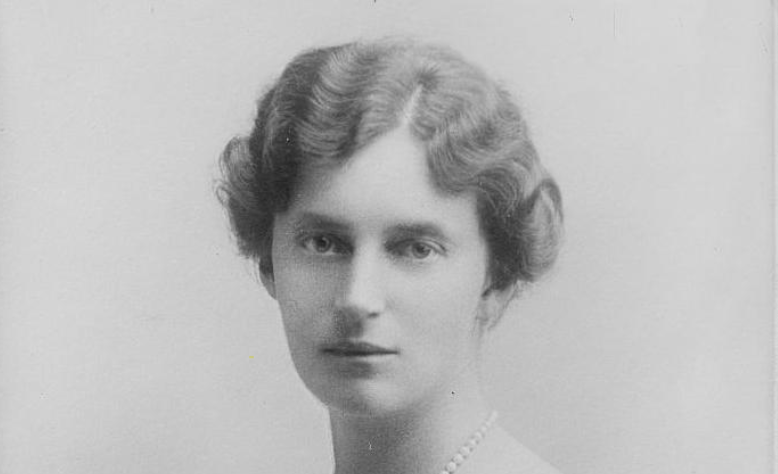
On Christmas Eve 1879, a daughter named Alexandrine was born to Frederick III of Mecklenburg-Schwerin and his wife Grand Duchess Anastasia Mikhailovna of Russia. This little girl was the first child of the couple who had married at the start of the year; her parents went on to have two more children – Cecilie who became the German Crown Princess and Frederick Francis who became the next Grand Duke of Mecklenburg-Schwerin.
Not much is known of the upbringing of Alexandrine and her siblings other than they were raised between their household in Germany and in Cannes in France because her father the Grand Duke suffered badly with asthma and the climate was much better for him there. Alexandrine and her siblings took part in lots of sporting activities and were well-educated; Alexandrine played piano particularly well and had a passion for music. At the age of eighteen Alexandrine was deemed old enough to marry and was wed on the 26th April 1898 to Prince Christian of Denmark. The couple were to reside in Denmark in Sorgenfri Palace close to Copenhagen and Amalienborg Palace in Copenhagen and were given the use of Marselisborg Palace as a summer home in Jutland. At this time, Alexandrine’s husband began his military education, which was common practice at the time for princes; this lasted until 1892, meaning he was often away from home.
The young couple soon had two children, sons named Frederick and Knud. In 1906, Christian’s father became King Frederick VIII of Denmark, making Christian the Crown Prince and next in line for the throne. This position only lasted a few years as Christian’s father died suddenly while out for a walk at the age of 68, making Christian and Alexandrine King and Queen a lot sooner than they had expected. King Christian X and Queen Alexandrine of Denmark took to the throne in 1912. Alexandrine did not involve herself much in political life but focused on charity work and music; governing over a number of musical societies. The Queen also loved gardening, photography and golf. When World War One struck Europe, Alexandrine founded a Queen’s Committee to support those in poverty.
In 1918 the relationship between Denmark and the country Iceland was redefined. Iceland had been part of the realm of Denmark for some time, but on 1 December 1918, Iceland became an independent country, a sovereign state. However, Denmark and Iceland were still bound together by a common monarch; King Christian X became King Kristján X and Queen Alexandrine was known as Queen Alexandría in Iceland. King Kristján was the first and only monarch to rule over Iceland as a sovereign country.
During World War Two, the royal couple were very popular and acted as national symbols. Queen Alexandrine, in particular, was praised for her loyalty to Denmark over her birth country of Germany. It was said of the Queen “Protect our Queen, the only German we would like to keep!”
Sadly, it was not long before Denmark fell under German occupation, which lasted until the end of the war in 1945. The Royal Family remained in Denmark along with the government, though they were under German control, especially after 1943 when the country was under full military occupation. The King and Queen were looked upon as national symbols and symbols of hope during this time. As for Iceland, occupation by England and the USA to protect the country and the German occupation of Denmark meant that it became impossible for the King to govern over both nations and the union began to crumble. Before the war ended, Iceland became a republic in June 1944; King Christian sent a letter of congratulations to his former subjects from his home in Denmark. This meant that Queen Alexandría was the last Queen of Iceland.
In 1947, Alexandrine was widowed and her son Frederick ascended the throne as King Frederick IX; in 1972, King Frederick was succeeded his own daughter and Alexandrine’s granddaughter, the current queen of Denmark Queen Margrethe II. Alexandrine died aged seventy-three in December 1952.

